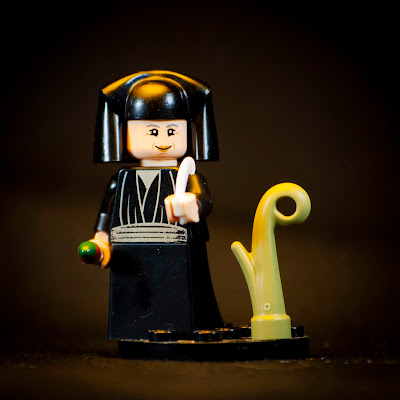St. Hubert of Liege
St. Hubert is best known as the patron saint of hunters, but his hagiography, and his cult thereafter, have plenty of points of interest as well.
For many years, an item called St. Hubert's Key was used to prevent rabies. And it actually worked! At the time, the cause of rabies was unknown, but the key was a small, metal nail-like object that would be heated and applied to the the bite while invoking the intercession of St. Hubert. It turns out that applying heated metal to a fresh bite wound actually cauterized the wound and sterilized the rabies virus, thus preventing the recipient from contract rabies themselves.
Because of this connection to dog bites, St. Hubert has also been invoked as the patron saint of and against Werewolves. (Here I must resist the temptation to derail this post further by going into the Hounds of God, but we must save that for another day...)
Hubert (called Hubertus in his day) was fairly normal for the first part of his life. He was a courtier, an advisor and friend to the Mayor of the Palace of the Kingdom of the Franks. His life was filled with pleasure and charm, and one of his favorite hobbies, as was common among his rank, was hunting.
Lifetime: ~656 to ~727
Region: Toulouse, France
Patronages: Hunters; Mathematicians; Metalworkers
Iconograpy: Bow and arrow; Stag with crucifix between horns
Feast Day: November 3
Region: Toulouse, France
Patronages: Hunters; Mathematicians; Metalworkers
Iconograpy: Bow and arrow; Stag with crucifix between horns
Feast Day: November 3
However, his joy was short-lived: Hubert's wife died giving birth to his son, and Hubert, in mourning, left the court and dedicated himself almost entirely to hunting. In fact, he was so dedicated to his sport that he was out in the woods on Good Friday morning, while the rest of the faithful were at church.
Hubert was slinking through the woods, hot on the trail of a deer he was preparing to shoot with his bow, when the deer stopped suddenly and turned to look at Hubert. A glowing crucifix floated between the antlers of the animal, and it spoke to him.
God, through the deer, commanded Hubert to re-order his life and put God at the center of it, rather than his sport. The deer also told Hubert how to properly value the life of his quarry with a series of instructions that continues to shape ethical hunting laws to this day.
Hubert took his vision very seriously, and immediately sought out a bishop to help him turn his life around. That bishop was St. Lambert, who took Hubert as his pupil. Hubert renounced his honors, passed his birthright (and care of his young son) on to his brother, gave all his wealth to the poor, and began to study for the priesthood.
While Hubert was on a pilgrimage to Rome, Lambert was assassinated. However, the Pope had been given a vision as it happened, which also instructed him to appoint Hubert as the next bishop.
As bishop, Hubert continued to donate his salary to the poor, and was a famously eloquent preacher, evangelizing effectively among the nearby pagans.
Later, another vision caused Hubert to transfer his cathedral, the seat of his role as bishop, as well as his mentor Lambert's remains, to a small village named Liege. Thus Hubert became the first bishop of Liege.
Hubert died peacefully in about 727. His remains were venerated in Liege for about a century, before being moved to Saint-Hubert, Belgium, where they continued to be a common pilgrimage site until their disappearance during the Protestant Reformation.






